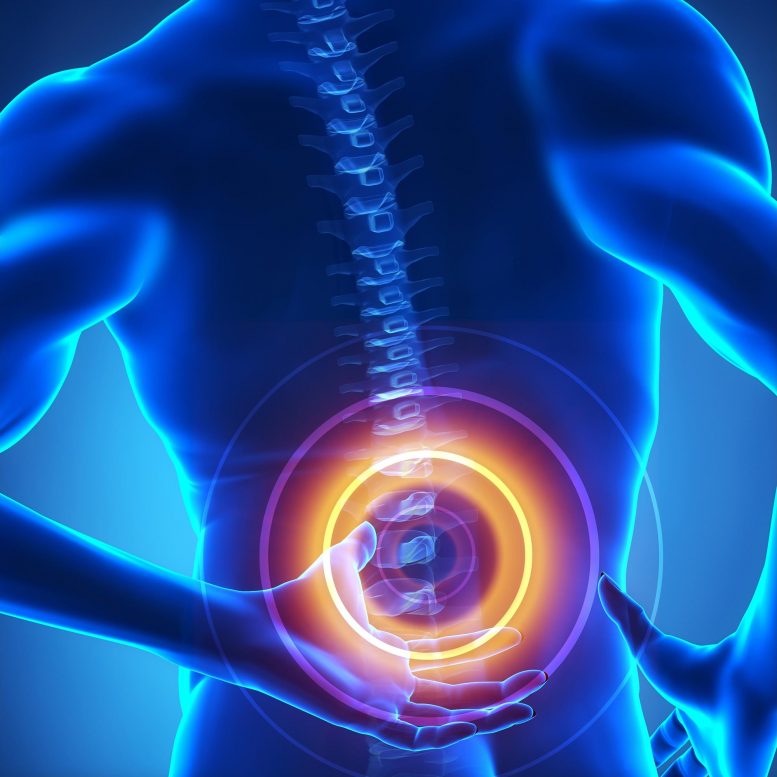 More than 570 million people globally suffer from back pain, resulting in substantial healthcare expenses and recovery challenges. Research shows that while early recovery is possible, persistent pain can lead to chronic conditions, necessitating new treatment approaches focusing on pain system sensitivity. Early detection of subacute cases is crucial to prevent long-term disability, illustrating the need for more extensive research and treatment strategies.Back pain contributes significantly to disability worldwide, impacting over 570 million individuals. In the United States from 1996 to 2016, healthcare costs related to back pain reached $134.5 billion and continue to rise.“The promising aspect is that most back pain episodes recover, even if you’ve been experiencing it for several months,” says University of South Australia Professor Lorimer Moseley. “However, the downside is that recovery becomes less likely after having back pain for more than a few months. This highlights the fact that while nearly everyone experiences back pain, some people fare better than others, but we don’t fully understand why.”Clinical Course of Low Back Pain ResearchThe systematic review and meta-analysis, conducted by an international team of researchers, included 95 studies aimed at understanding the clinical course of acute (< 6 weeks), subacute (6 to less than 12 weeks), and persistent (12 to less than 52 weeks) low back pain.For individuals experiencing new back pain, pain and mobility issues significantly improved in the first 6 weeks, but then recovery slowed down. This study addressed a gap in a 2012 paper from the same research team, revealing that many individuals with persistent back pain (over 12 weeks) continue to have moderate-to-high levels of pain and disability.“These findings indicate that back pain can persist even after the initial injury has healed,” Prof Moseley explains. “In such cases, back pain is linked to pain system hypersensitivity, not ongoing back injury. This means that if you have chronic back pain – back pain most days for over a few months – it's time to adopt a new approach to recovery.” He notes that there are new treatments focusing on training both the brain and body that "start with understanding that chronic back pain isn't a simple problem, which is why it doesn't have a simple solution, and then gradually reducing pain system sensitivity while enhancing function and participation in meaningful activities.”The authors emphasize the importance of identifying slowed recovery in individuals with subacute low back pain so that care can be intensified and the likelihood of persistent pain reduced. Additional research into treatments is necessary to address this pervasive and incapacitating condition, as well as to gain a better understanding of it in individuals under 18 and over 60 years.Reference: “The clinical course of acute, subacute and persistent low back pain: a systematic review and meta-analysis” by Sarah B. Wallwork, Felicity A. Braithwaite, Mary O’Keeffe, Mervyn J. Travers, Simon J. Summers, Belinda Lange, Dana A. Hince, Leonardo O.P. Costa, Luciola da C. Menezes Costa, Belinda Chiera and G. Lorimer Moseley, January 22, 2024, Canadian Medical Association Journal.
More than 570 million people globally suffer from back pain, resulting in substantial healthcare expenses and recovery challenges. Research shows that while early recovery is possible, persistent pain can lead to chronic conditions, necessitating new treatment approaches focusing on pain system sensitivity. Early detection of subacute cases is crucial to prevent long-term disability, illustrating the need for more extensive research and treatment strategies.Back pain contributes significantly to disability worldwide, impacting over 570 million individuals. In the United States from 1996 to 2016, healthcare costs related to back pain reached $134.5 billion and continue to rise.“The promising aspect is that most back pain episodes recover, even if you’ve been experiencing it for several months,” says University of South Australia Professor Lorimer Moseley. “However, the downside is that recovery becomes less likely after having back pain for more than a few months. This highlights the fact that while nearly everyone experiences back pain, some people fare better than others, but we don’t fully understand why.”Clinical Course of Low Back Pain ResearchThe systematic review and meta-analysis, conducted by an international team of researchers, included 95 studies aimed at understanding the clinical course of acute (< 6 weeks), subacute (6 to less than 12 weeks), and persistent (12 to less than 52 weeks) low back pain.For individuals experiencing new back pain, pain and mobility issues significantly improved in the first 6 weeks, but then recovery slowed down. This study addressed a gap in a 2012 paper from the same research team, revealing that many individuals with persistent back pain (over 12 weeks) continue to have moderate-to-high levels of pain and disability.“These findings indicate that back pain can persist even after the initial injury has healed,” Prof Moseley explains. “In such cases, back pain is linked to pain system hypersensitivity, not ongoing back injury. This means that if you have chronic back pain – back pain most days for over a few months – it's time to adopt a new approach to recovery.” He notes that there are new treatments focusing on training both the brain and body that "start with understanding that chronic back pain isn't a simple problem, which is why it doesn't have a simple solution, and then gradually reducing pain system sensitivity while enhancing function and participation in meaningful activities.”The authors emphasize the importance of identifying slowed recovery in individuals with subacute low back pain so that care can be intensified and the likelihood of persistent pain reduced. Additional research into treatments is necessary to address this pervasive and incapacitating condition, as well as to gain a better understanding of it in individuals under 18 and over 60 years.Reference: “The clinical course of acute, subacute and persistent low back pain: a systematic review and meta-analysis” by Sarah B. Wallwork, Felicity A. Braithwaite, Mary O’Keeffe, Mervyn J. Travers, Simon J. Summers, Belinda Lange, Dana A. Hince, Leonardo O.P. Costa, Luciola da C. Menezes Costa, Belinda Chiera and G. Lorimer Moseley, January 22, 2024, Canadian Medical Association Journal.
DOI: 10.1503/cmaj.230542The study was funded by a National Health and Medical Research Council Leadership Investigator Grant.
What’s New about Lower Back Pain?













